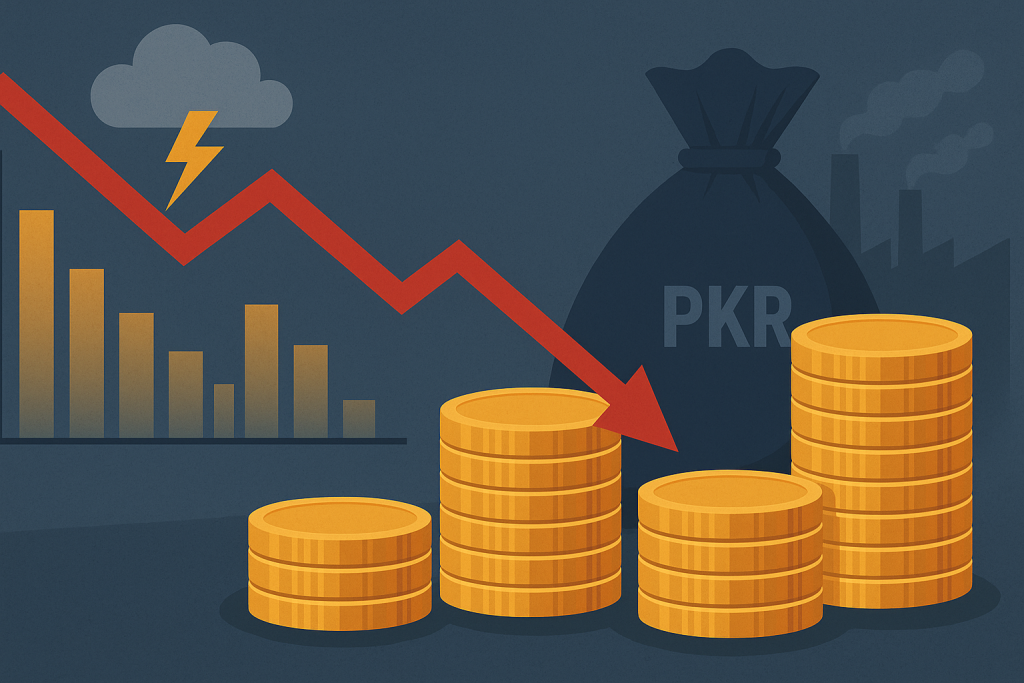The government has outlined significant risks that may undermine the Pakistan budget 2025-26 and medium-term fiscal outlook. These are slow GDP growth, inflation spikes, exchange rate volatility, poor revenue collection, increasing debt servicing expenses, poor performance of state-owned enterprises (SOEs), and natural or climate-related shocks.
These risks were described by Finance Minister Muhammad Aurangzeb and Finance Secretary Imdadullah Bosal in a fiscal risk statement presented to parliament. They categorized the risks into seven broad categories, which include macroeconomic, revenue, debt, SOEs, climate change, natural disasters, and contingent liabilities. The statement also measured the potential effect on the fiscal deficit and proposed mitigation measures.
Economic Uncertainty & Revenue Gaps are a Major Threat
The statement cautioned that a one-point decline in GDP growth would reduce tax revenues and increase social protection expenditures, widening the fiscal deficit. The overall impact of slower economic growth, depreciation of the currency, and inflation may raise the fiscal deficit by 0.13 percent of GDP in FY26.
Pakistan budget 2025-26: The increase in inflation and exchange rate fluctuations can add additional pressure on the state budget, but it is difficult to quantify their effect. One of the issues is revenue deficits. In case the growth of tax revenue is half the anticipated rate, the fiscal deficit can increase by 0.4 percent of GDP. A Rs1.161 trillion shortfall this fiscal year has already put a strain on the government’s FY26 revenue target of Rs14.13 trillion.
Other streams are also vulnerable to revenue. A 30 percent decline in State Bank profit transfers would increase the fiscal gap by 0.32 percent of GDP. Another 0.2 percent of the deficit may be added by a 20 percent decline in petroleum levy collections. In the coming year, the government will raise Rs2.4 trillion in SBP profits and Rs1.47 trillion in petroleum levies.
Fiscal Risks Increase with Debt, SOE Losses, & Climate Disasters
The problem of debt servicing is central. An increase of two points in domestic rates and one point in external rates may drive up interest payments, increasing the fiscal deficit by 0.42 percent of GDP.
Another drain on finances is SOEs. A 6.1 percent decline in anticipated dividends may increase the deficit by 0.02 percent of GDP. In case the government support to SOEs increases to 1.5 percent of GDP, the deficit may increase by 0.4 percent.
Natural disasters and climate change have both long-term and short-term risks. The government cautioned that natural disasters pose the greatest single fiscal threat. In the absence of disaster financing instruments, these events may add up to 1.03 percent of GDP to the fiscal deficit. Efficient instruments, such as catastrophe bonds or insurance arrangements, can decrease the impact to 0.44% of GDP.
Due to Pakistan’s reliance on fluctuating revenue streams, the research advocated for increased tax collection, and improved climate resilience.
